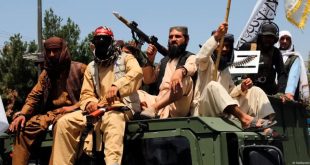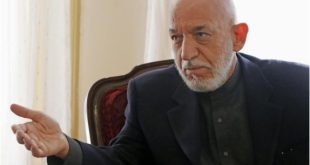By Manish Rai-Islamic State which stormed Iraq and whole world in 2014 with its takeover of major Iraqi and Syrian cities by exploiting Sunni Arab grievances in Iraq and chaos in neighbouring Syria. But the militant group is steadily losing ground in both the countries. The so-called Caliphate is on the back foot. Even some analysts are predicated that IS has more or less passed the peak of its military power on the Syrian and Iraqi battlefield. If IS continues to lose territory at the same pace, some people believe the year 2016 could well be its last to function as pseudo state. The Islamic State has lost about 45 percent of its territory in Syria and 20 percent in Iraq since the peak of its control in August 2014, according to estimates by United States analysts. With every town and village that is lost, the group also loses income that comes from fines and taxes. Their oil industry has been bombed which is the main source of funding and supply lines into Turkey almost cut. The overall effect of all these losses on the group’s funding, leadership, arms, propaganda communications and manpower is immense and it surely degrades the group’s fighting capabilities.
The C.I.A. now estimates that IS currently has 20,000 to 25,000 fighters on the ground that is the lowest force level since the end of 2014. Islamic State’s ability to function as a military pseudo-state is troubled because it’s finding it difficult to replenish its armed ranks. Various forces are squeezing the caliphate at multiple points simultaneously, ISIS can’t resist everywhere. Even the current affiliates of Islamic State in North Africa and the Arabian Peninsula face stiff competition from local rival groups and rising counterterrorism pressure from the states. But forcing IS out of the cities and territories which it currently holds is unlikely to lead to its demise. ISIS may revert to its previous tactics more those of an insurgency than a state. They’re going to have sleeper cells, bombings, kidnappings and assassinations. It’s going to be continuous and IS still after losing its core territory can run a bloody deadly insurgency for years. Islamic State is a hybrid organization. Its members disparate experiences combined to transform an insurgent force into a formidable army that can shift from acting like a guerrilla militia to a conventional army, all while fighting on multiple fronts hundreds of miles away from its logistical bases. The core of IS are former Saddam-era army and intelligence officers, particularly from the Republican Guards which provide IS with good military strategy and when its combined with insurgency experience of its fighters who comes from various parts of the world. Then it makes IS a very different type of terrorist organisation which can fight as conventional forces and even can run insurgency campaign.
Islamic State can find other unstable places on the globe which can be used as its base. At present, Libya looks the most promising. It has just the kind of failed-state anarchy, the “savagery” that leaves room for the jihadists to move in, forging alliances with local militants and disgruntled supporters of the overthrown regime. Just like Iraq. Moreover IS the best-funded terrorist organisation history has ever seen can run a successful insurgency campaign with its deep pockets. The group financing is certainly more reminiscent of a state than that of organisations such as al-Qaeda that relied heavily on donations to fund their operations. So it would be erroneous to assume that IS will simply melt away by suffering military defeats in Syria and Iraq. With its surviving fighters IS can certainly engage in guerrilla warfare in whole Middle East and in direct or inspired suicidal bombing operations within its global network. Already, the group has stepped up the pace of suicide bombings in Baghdad, Damascus and elsewhere in an apparent attempt to assert its presence even as it is defeated on the ground.
Both the military and counterinsurgency strategy is required for the complete defeat of Islamic State. Any counterinsurgency strategy core assumption is that the enemy has significant support in the communities from which it recruits and gets support. The aim of effective counterinsurgency strategy is to deny the enemy any propaganda victories that can further fuel its recruitment and support base. Unfortunately ISIS is very good in its propaganda war they always try to show war going in the region as a new form of crusade which they are fighting for defending the faith. We should not allow IS to brand itself as the icon of global jihadism, broadening its affiliate and allegiance-based networks. As such, a longer term strategy needs to be developed which includes prevention of further proliferation of the group within the Middle East and beyond. This approach needs to address ways of decreasing the group’s appeal within the region. At last the local divisions and regional sectarianism that fuelled the rise of IS should also be taken care off so that Islamic State could not return to the places from where it was driven out.
The author is a columnist for Middle-East and Af-Pak region and Editor of geo-political news agency Views Around can be reached at [email protected].
 Afghanistan Times
Afghanistan Times




